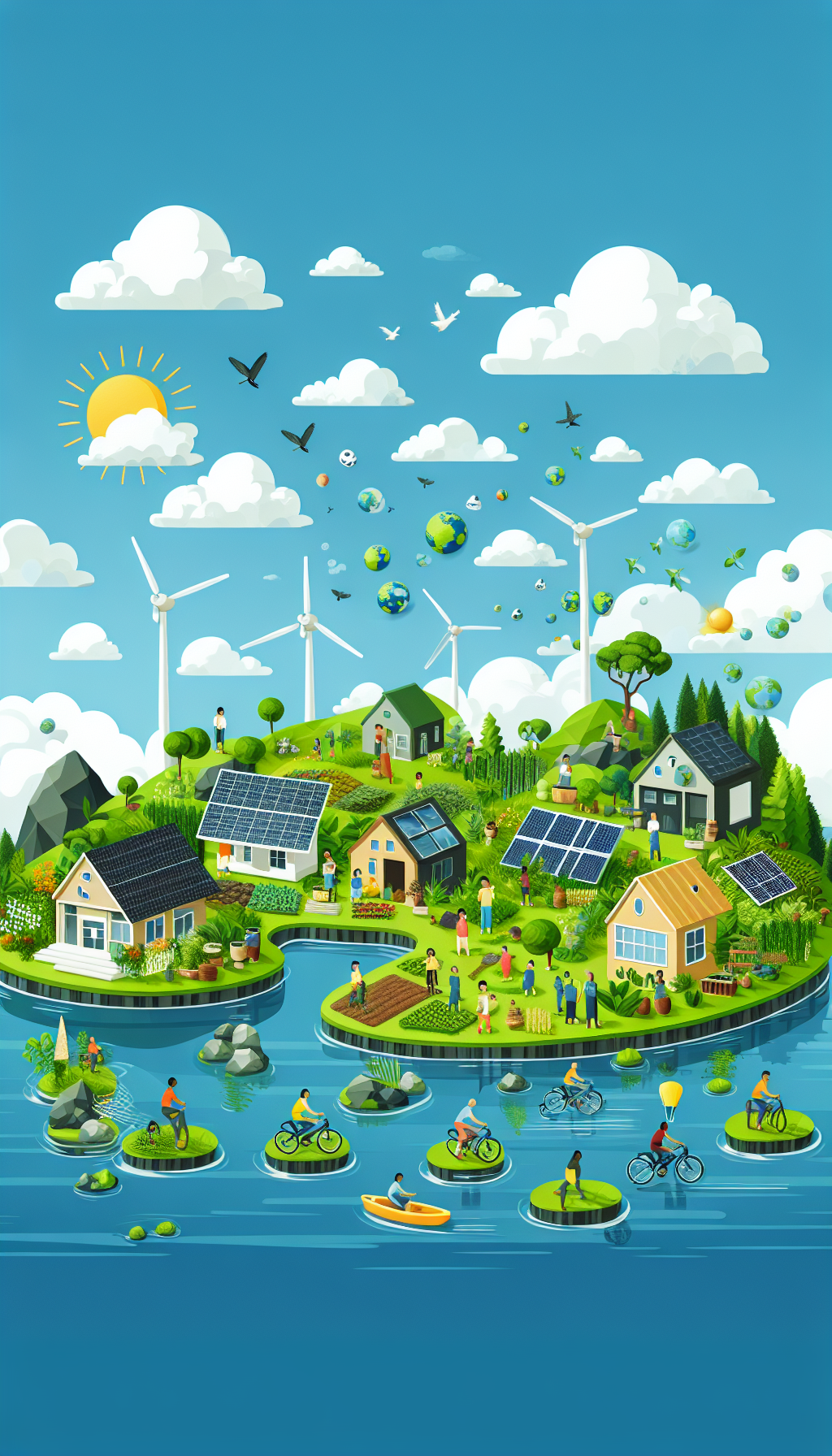Sustainable Living: Eco Homes Transforming US Island Communities
The Rise of Eco Homes in Island Communities
In recent years, a push for sustainable living has gained significant momentum across the United States, particularly in island communities where the balance between development and the preservation of natural resources is delicate. Eco homes are at the forefront of this movement, combining innovative design with sustainable practices to create living spaces that are environmentally friendly, energy-efficient, and adaptable to the unique challenges posed by island lifestyles.
What Are Eco Homes?
Eco homes, also known as green homes, employ sustainable practices in their design and construction to minimize environmental impact. These homes utilize renewable energy sources such as solar or wind, incorporate energy-efficient appliances, and use sustainable materials such as bamboo, reclaimed wood, and recycled steel. They strategically include features like green roofs, rainwater harvesting systems, and natural ventilation to promote energy efficiency and reduce the carbon footprint of the inhabitants.
Island Communities Facing Unique Challenges
Island communities, such as those in Hawaii, the Florida Keys, and the San Juan Islands, face particular hurdles including limited space, high energy costs, and vulnerability to climate change impacts like rising sea levels and extreme weather conditions. Traditional construction methods can exacerbate these challenges and often contribute to ecological degradation. By embracing eco homes, these communities can create sustainable living environments that protect both residents and their surrounding ecosystems.
Innovative Examples of Eco Homes
-
Hawaii’s Sustainable Oceanfront Homes: Hawaii has taken significant strides in promoting sustainable architecture, with new builds often reflecting traditional Hawaiian values of environmental stewardship. Eco homes in Hawaii utilize solar panels, natural ventilation through strategically placed windows, and locally sourced materials to reflect the natural landscape.
-
Florida Keys’ Elevated Homes: In the Florida Keys, builders are creating elevated eco homes designed to withstand storm surges and flooding while reducing their environmental impact. These homes often incorporate sustainable practices such as energy-efficient HVAC systems and green roofs that provide insulation and absorb rainwater.
-
San Juan Islands’ Off-Grid Living: Properties in the San Juan Islands exemplify off-grid living, wherein homes are designed to operate independently of traditional utilities. Utilizing solar energy, wind turbines, and rainwater cisterns, residents can achieve complete self-sufficiency while minimizing their ecological footprint.
Benefits of Eco Homes on Islands
-
Environmental Conservation: Eco homes contribute to biodiversity conservation by utilizing local materials and minimizing land disturbance. Traditional construction can lead to habitat destruction, while sustainable homes often blend harmoniously with natural landscapes.
-
Resilience to Climate Change: Eco homes are designed to withstand the challenges posed by climate change. Features like raised foundations and durable, sustainable materials enhance durability against extreme weather, providing peace of mind for homeowners.
-
Economic Advantages: While the initial investment in eco homes can be higher, the long-term savings on energy bills, combined with potential government incentives and increasing property values, make them economically advantageous. Many island communities now offer tax credits or grants for constructing eco-friendly homes.
-
Community Health: Sustainable homes prioritize air quality and utilize non-toxic materials, contributing to a healthier living environment for residents. Improved health outcomes can lead to lower healthcare costs and enhance overall community well-being.
The Community Impact of Eco Homes
The transition to eco homes can have transformative effects on island communities. The incorporation of green technologies encourages a culture of sustainability that extends beyond individual households. Community gardening, shared solar projects, and cooperative water systems are increasingly common in eco-conscious areas, fostering social connections and shared responsibilities for the environment.
Challenges in Implementing Eco Homes
Despite the many benefits, the widespread adoption of eco homes faces several challenges, including:
-
Regulatory Barriers: Zoning laws and building codes can inhibit innovative designs that prioritize sustainability. Advocating for regulatory changes at local levels is essential for enabling eco-home development.
-
Cost Constraints: The upfront costs of sustainable building materials and technologies can be a barrier for many homeowners. Education and financial assistance programs are critical in facilitating access to eco-home construction.
-
Cultural Resistance: In some communities, a strong attachment to traditional building styles may hinder the acceptance of eco-friendly designs. Awareness campaigns that highlight the benefits of sustainability can help overcome this resistance.
Sustainable Community Initiatives
Communities across the United States are beginning to implement initiatives to promote sustainable building practices:
-
Education and Workshops: Many island communities offer workshops on sustainable living, covering topics like energy efficiency, zero-waste practices, and permaculture. These educational initiatives empower residents with the knowledge to adopt eco-friendly practices at home.
-
Partnerships with Local Organizations: Collaborations between local governments, nonprofits, and businesses are vital in promoting sustainable practices. For instance, partnerships may provide financial incentives for homeowners to upgrade to eco-friendly designs.
-
Sustainable Tourism: Eco homes can also support sustainable tourism initiatives. By promoting eco-friendly lodgings, island communities can attract environmentally conscious travelers who contribute to the local economy while preserving natural resources.
The Future of Eco Homes in Island Communities
As awareness of climate change and sustainability grows, the future of eco homes in U.S. island communities looks promising. Innovations in building technology and materials continue to evolve, allowing for even more efficient energy use and environmental impact reduction. Additionally, heightened interest in sustainable living can spur new policy frameworks and community initiatives that further support eco-friendly development.
In an era where climate resilience is paramount, embracing eco homes signifies a broader commitment to sustainable living, encouraging a harmonious relationship between human habitation and the natural world. Island communities have the unique opportunity to lead the charge in eco-friendly architecture, ensuring that their unique environments are preserved for future generations while providing a high quality of life for current residents.

